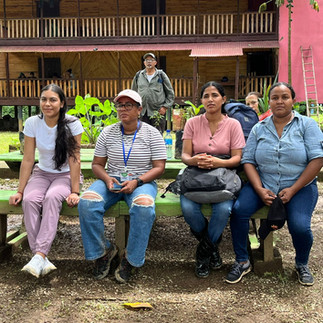Center for the Autonomy and Development of Indigenous Peoples (CADPI) concludes diploma program on Territorial Governance for Locally Led Adaptation
- Centro para la autonomia De los Pueblos Indigenas

- 1 jul 2025
- 2 Min. de lectura

During the week of June 22 to 26, 2025, CADPI held an in-person gathering in Nicaragua to conclude the diploma program, which forms part of a broader course covering other Latin American countries such as Belize, Guatemala, El Salvador, Nicaragua, Panama, Peru, Argentina, and Chile. The program focuses on Indigenous Territorial Governance for Adaptation as a form of resilience in the face of climate change impacts.
This Nicaraguan chapter of the diploma was directed towards 20 participants, including Miskitu, Mayangna, and Mestizo individuals from the territories of Wangki Awala Kupia, Prinzu Auya Un, and the Mayangna Nation. The scholarship recipients engaged in a hybrid learning modality, participating in synchronous and asynchronous virtual and in-person sessions, which enabled them to develop case studies and adaptation plans for their respective communities and/or territories.

The diploma program was implemented through collaboration between CADPI, the Fund for the Development of Indigenous Peoples of Latin America and the Caribbean (FILAC), the Intercultural Indigenous University (UII), and the Autonomous Government of the Northern Caribbean Coast (RACCN), with funding from the Government of the Netherlands through the British NGO, International Institute for Environment and Development (IIED).
The program aimed to build the capacities of key local actors with a track record of community collaboration by equipping them with tools to lead the development of Local Adaptation Plans aligned with the principles of Locally Led Adaptation (LLA).
The adaptation plans were developed using participatory and empowerment-based approaches, promoting gender equality and intergenerational relations. Their objectives include:a) Preserving and valuing Traditional Knowledge;b) Assessing ecosystem health and resilience;c) Promoting sustainability and environmental justice;d) Informing conservation policies and programs; ande) Facilitating collaboration between Indigenous communities, governments, and other organizations for the implementation of effective adaptation measures.
The diploma program had a total duration of 230 hours, of which 88 were theoretical and 142 practical. It included 18 virtual theoretical classes, 6 virtual tutoring sessions of 2 hours each, and guided 72 hours of fieldwork, reading, and research during the virtual phase.





























thanks for sharing